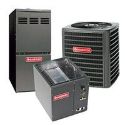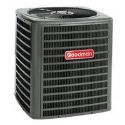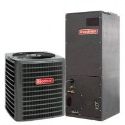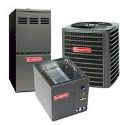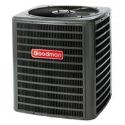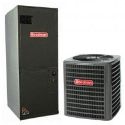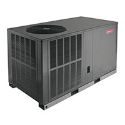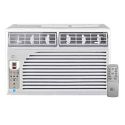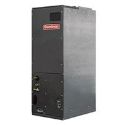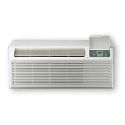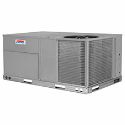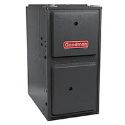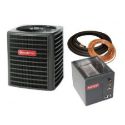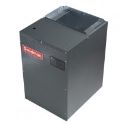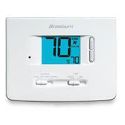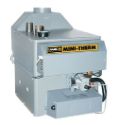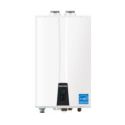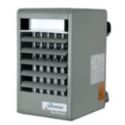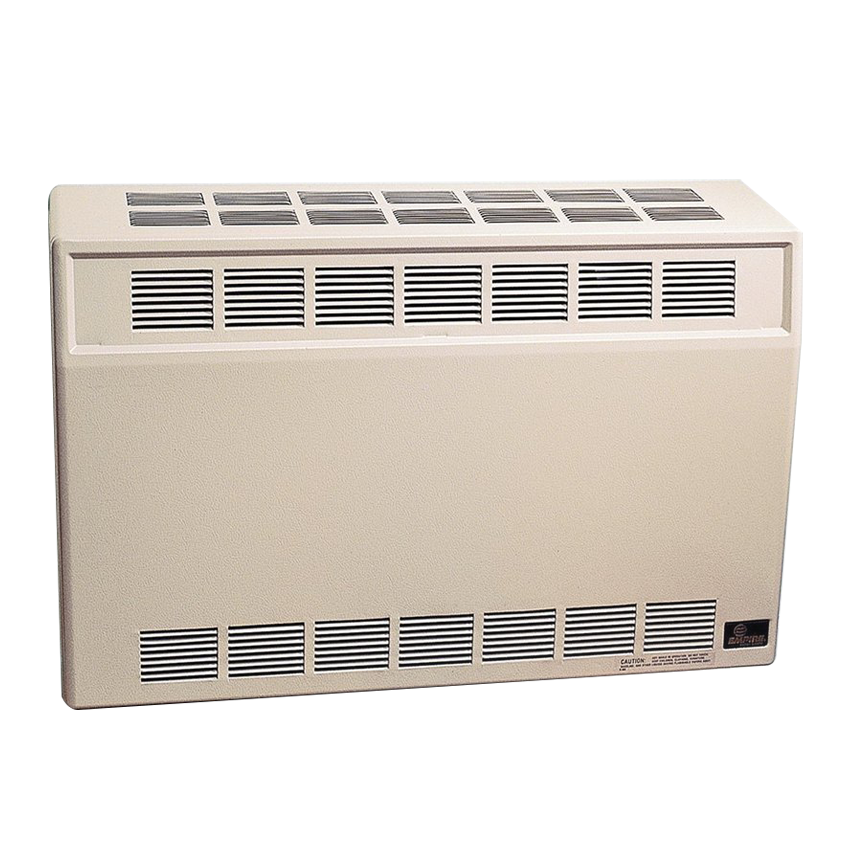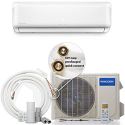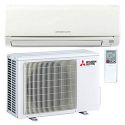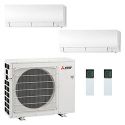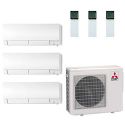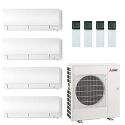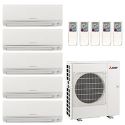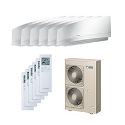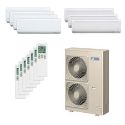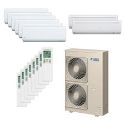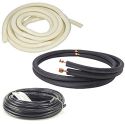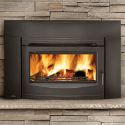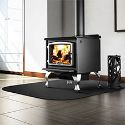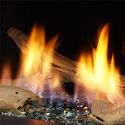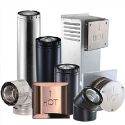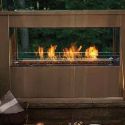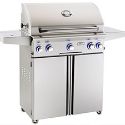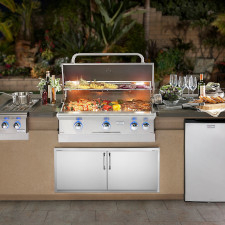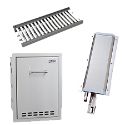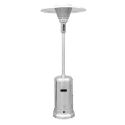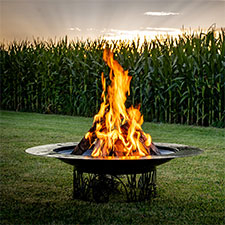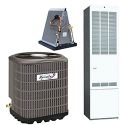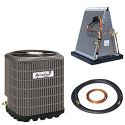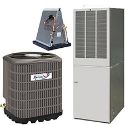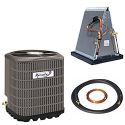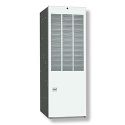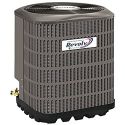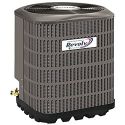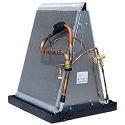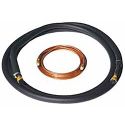Whether you are building a new home, renovating or adding on to your existing home, fireplace construction is one of the most exciting parts. It can also be a little overwhelming - especially with all the choices available on the market today. In this article, HVACDirect.com looks at some of the products available and how to order them so they provide the best heating and aesthetic design.
What Fireplace Do You Need?
Whether choosing a gas direct vent fireplace or a wood burning fireplace, you first have to decide on the size. If the primary purpose is heat, choose a size appropriate for the square footage of your home. You may also need to know how to choose a fireplace insert if you're building or renovating a masonry fireplace. These are available for most standard fireplace sizes to improve heating efficiency. Their design traps more heat inside so it warms the house instead of going up the chimney or getting absorbed into the masonry.
If you're purchasing a fireplace more for aesthetics, choose one that fits your style. Be mindful of the size of the room as even decorative fireplaces do generate heat. Most gas fireplaces have different front or facing options to add your own personal touch to the fireplace. All factory-built (often called prefabricated or zero clearance) fireplaces can be surrounded by a non-combustible material like stone, brick, tile, marble, granite, etc. to create an authentic masonry fireplace look for a fraction of the cost of building a brick fireplace from the ground up.
Gas Direct Vent Fireplaces
Direct vent fireplaces are the most popular choice for adding a fireplace in a new home or remodel. Burning wood can be rewarding and also save you some money if you have a free source of firewood. However, if you have to purchase firewood - especially in areas where it's hard to get - the cost per million BTUs of heat created is almost identical to using a gas fireplace.
Vented fireplaces are sealed combustion fireplaces that use a pipe-within-a-pipe concentric vent. This draws air in for combustion and exhausts all the flue gases outside of your home. They do not affect the air pressure or the air quality in your home. Direct vent fireplaces are offered in various sizes depending on the area you are putting it in. The average size is 36" and the average BTU output is 30K - 40k. Smaller or more decorative fireplaces typically use 15K to 25K BTUs. There are larger linear fireplaces that can reach 60K BTUs and more.
(Empire Tahoe Clean Face Direct Luxury Fireplace shown below.)

What to Know About Vented Fireplaces
Front Choices
Most manufacturers either offer a clean front so you can bring non-combustible materials up to the viewing area or offer decorative fronts to personalize the fireplace to your décor.

(Options for the Napoleon Ascent 36 shown)
Control Choices
You will have to decide on how you want to turn your fireplace on and off. Most fireplaces can be operated with a wall switch or an on/off remote. Another option is a thermostat remote with a built-in temperature sensor that operates like a furnace thermostat. A multi-function remote will turn the fireplace on and off, has a built-in thermostat, adjusts the flame and can even adjust the height of the flame on certain models. Some premium fireplaces come standard with a certain type of remote. You will need to look in the specifications area of the webpage or review the fireplace owner's manual for more details.

Interior Liners
A majority of gas fireplaces come standard with a painted black steel interior. This is enough for a lot of people. The flame stands out against the black background, and it also makes the back wall of the fireplace appear indefinite.
Most gas direct vent fireplaces have the option of brick liners. These are designed to create a more authentic masonry look. A newer option to the market is porcelain or glass reflective panels. These attach to the inner walls and back of the fireplace with a glossy look that reflects the appearance of the flame. The flame dancing against the back and sides of the fireplace is mesmerizing.
Notice how the flames reflect on the back and side walls of the Kingsman ZCVRB3622 fireplace below.

Venting
Direct vent fireplaces can be vented vertically through the roof or horizontally through a wall. Each fireplace is different, so you will need to check the installation manual or consult an NFI-certified professional to layout the venting material you will need for your fireplace. Some fireplace manufacturers design their own venting. Others use Dura-Vent, which is the largest venting manufacturer in the fireplace industry.
Wood Burning Fireplaces
Do you want to build your own fire and enjoy a real wood burning glow in your home? If so, a wood fireplace is your choice. There are several types of wood fireplaces depending on what you expect the fireplace to do for you.
Do you want to heat your home with the fireplace?
If you are looking for the fireplace to be a heat-source then you will have to choose an EPA approved fireplace like the Osburn Stratford II Wood Burning Fireplace. The air for combustion enters the fireplace in strategic points so that the wood (and left-over smoke) are burned and re-burned. This allows a fireplace like this to burn at up to 74% efficiency, heat up to 2,200 square feet and burn up to nine hours on a single load of firewood.

(Osburn Stratford II Fireplace shown)
Are you interested in some heat but are shopping more for looks?
In that case, one of the Biltmore fireplaces from Majestic may be more appropriate. These are larger open-burning fireplaces that cost a fraction of what it costs to build a masonry fireplace and are sized similarly. These fireplaces allow you to burn a wood fire and offer a modest amount of heat but are primarily a decorative appliance.

(Majestic Biltmore 42-Inch Fireplace shown)
What You Need to Know about Wood Burning Fireplaces
All wood burning fireplaces require a chimney that is typically 12 to 15 inches in diameter (often made by and tested to work with the fireplace) that runs vertically up above the roofline so that the chimney cap is at least two feet above the nearest point of the building.
High-efficiency fireplaces come standard with or have choices for sealed airtight doors. Less efficient fireplaces have doors that use tempered glass and are typically recommended to be closed only when the fire is getting up to speed or when the fire is dying down.
Some building jurisdictions require a fresh air duct that connects from the fireplace to a small vent on the outside of the home. This allows the fireplace to draw approximately 25% of its combustion air from outdoors. Always consult the owner's manual, your local building jurisdiction and an NFI-certified professional when ordering, installing or servicing a fireplace.
New Fireplace Frequently Asked Questions
What is the purpose of a fireplace insert?
Fireplace inserts are essentially a stove that's been modified to fit within an existing masonry firebox. They serve two purposes for home heating. In new fireplace construction, an insert increases the fireplace efficiency by ensuring more heat circulates through the room or house instead of escaping up the chimney. Inserts also can be used to convert your fuel source - such as switching from a wood or gas fireplace to an electric fireplace - without completely redoing your masonry.
How much does it cost to put in a fireplace insert?
As with other HVAC systems, fireplace insert costs vary based on the size of the unit and how you're using it. The insert itself can range from $500 to $3,000 when buying direct online. Costs go up significantly when buying from a local store or installer. Installation costs will vary based on complexity, size of the insert and other variables.
 Shopping Cart
Shopping Cart


